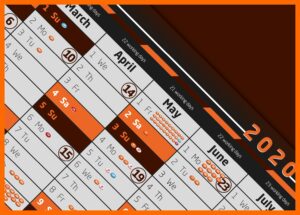The winters are getting milder and they do not resemble the winters of ten or even more years ago. Despite this, there are regions where we can come across the blue road sign with snow chain symbol (C-18) saying that anti-skid chains must be used. However, before we buy a set of snow chains, let’s get to know the different types of chains, because there are a lot of choices.
Different types:
Conventional snow chains are usually made of

an alloy of chrome, nickel and manganese. Sometimes an admixture of titanium is also used to improve their strength. Classic snow chains form a braid that we put on the wheels. Wheel chains can also take the form of a textile band. These are so-called socks, which are easier to install, but do not improve the grip as effectively as their steel counterparts. Their function will perform
particularly well on broken, solidly packed snow. Textile chains are an alternative but are not recommended for those who intend to use them in very demanding conditions. It should also be remembered that the regulations do not recognize them as full-fledged anti-skid chains. For this reason, they cannot be used on the road sections marked with the C-18 sign.
How to choose and install snow chains?
When buying car snow chains, we should be guided mainly by one parameter. I am talking about the size of the tires in our car. This is the most important criterion, although the snow chains of most manufacturers have a certain tolerance in this regard. There are also those whose flexibility covers a range of three sizes. This means that when moving on the popular “sixteenths”, we do not necessarily have to buy chains for 16 wheels. Regardless of what size you ultimately choose, you should practice mounting the chains.
How to mount chains on wheels?
First you should clean the tire and the wheel arch recesses from snow. Then we put the tire chains on the inside of the wheels. After stretching the braid, fasten the catches together. A more detailed description of how to put the snow chains on the wheels will be provided in the instruction manual (often illustrated) attached to the factory packaging. A good solution will be to use snow chains equipped with an automatic tensioner. This will significantly facilitate their exploitation; we will not be forced to stop driving to check whether there is any play.
Driving with chains – what you need to know
It is very important to stop after 50-100 meters to check the chain tension. Snow chains should only be put on in places where the surface is covered with snow. They must be removed before we go to snowless asphalt. Otherwise, we can expose both the tires and the chains themselves to damage. An important tip: we put the chains on the wheels of the drive axle. If the car is driven by the rear axle, then the second set of chains can also be mounted on the front. This will help protect the steering wheels.

Driving with the chains not only increases safety, but unfortunately also brings limits. The most noticeable will be the forced speed limit to 40 km / h. However, it is no secret that we usually use the chains on such sections where snow and / or icing would not allow for much higher speeds anyway. Slow driving reduces the risk of heavy braking and, as a rule, excludes dynamic acceleration. This is good, because such maneuvers are also not recommended even if snow chains are used. In addition, the road must, of course, be covered with snow.
Is a certificate required?
It is worth paying attention to the certificates of the product we buy. The most respected standards are defined by TÜV and Ö-norm. There are opinions that only branded and certified chains guarantee real safety in difficult conditions. If we intend to go to Austria or Norway, we will even be forced to obtain only chains with certificates. This is required by local regulations. Reliable 16” snow chains will cost you around 50 EUR.





